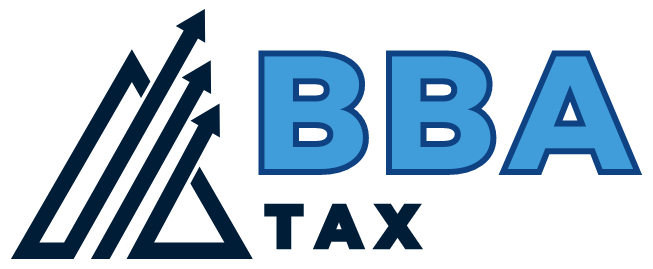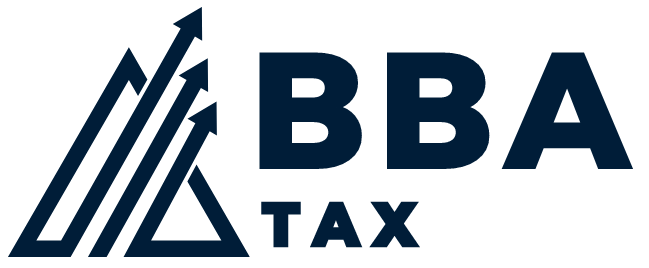Filing corporate taxes is a critical responsibility for businesses in Canada. Whether you’re a small business owner or managing a large corporation, navigating the Canada Revenue Agency’s (CRA) corporate tax filing requirements can be complex. However, understanding the process step by step can ensure your business stays compliant and avoids costly penalties.
At BBA Tax, an Ottawa-based accounting firm, we specialize in helping businesses of all sizes manage their corporate tax obligations. In this guide, we’ll provide a detailed, step-by-step process for filing corporate taxes in Canada, along with tips to streamline the process and maximize deductions.
Table of Contents
- Understanding Corporate Taxes in Canada
- Step 1: Determine Your Fiscal Year
- Step 2: Gather Necessary Financial Records
- Step 3: Calculate Your Income and Deductions
- Step 4: Prepare Financial Statements
- Step 5: Complete the T2 Corporate Income Tax Return
- Step 6: File Additional Forms and Schedules
- Step 7: Submit Your Tax Return to the CRA
- Step 8: Make Payments for Any Taxes Owed
- Penalties for Late Filing and Payment
- Tips for Filing Corporate Taxes Efficiently
- How BBA Tax Can Help Your Business
1. Understanding Corporate Taxes in Canada
Corporate taxes in Canada are calculated based on the income earned by a corporation during its fiscal year. Businesses must file a T2 Corporate Income Tax Return with the CRA, which includes details about revenue, expenses, and applicable tax credits.
Key points to remember:
- Federal and Provincial Taxes: Canadian corporations pay both federal and provincial/territorial taxes.
- Tax Rates: Tax rates vary depending on the type of corporation (e.g., small business, general corporation) and the province of operation.
- Deadlines: Corporate tax returns must be filed no later than six months after the end of the fiscal year.
2. Step 1: Determine Your Fiscal Year
A corporation’s fiscal year is its financial reporting period, which does not necessarily align with the calendar year.
- Choosing a Fiscal Year: Typically, a corporation’s fiscal year begins on the date of incorporation or a chosen start date and ends 12 months later.
- Importance of Consistency: Once chosen, the fiscal year should remain consistent unless the CRA approves a change.
3. Step 2: Gather Necessary Financial Records

To file corporate taxes accurately, you need comprehensive financial records, including:
- Revenue Records: Sales invoices, receipts, and statements.
- Expense Records: Receipts for business expenses such as office supplies, travel, and advertising.
- Payroll Records: Employee wages, benefits, and tax withholdings.
- Bank Statements: All corporate bank account transactions.
- Loan and Investment Records: Details about corporate loans, interest paid, and investments.
Using accounting software or professional bookkeeping services, like those offered by BBA Tax, can simplify record-keeping.
4. Step 3: Calculate Your Income and Deductions
To determine taxable income, calculate:
- Gross Revenue: Total income from all sources.
- Deductions: Subtract eligible expenses from gross revenue. Common deductions include:
- Salaries and wages.
- Rent and utilities.
- Professional fees (e.g., accounting and legal).
- Business travel and meals (50% deductible).
- Depreciation on assets.
Pro Tip: Keep detailed records of all deductions to substantiate claims during a CRA audit.
5. Step 4: Prepare Financial Statements
Corporate tax filings must include financial statements, such as:
- Income Statement: Details revenue, expenses, and net income.
- Balance Sheet: Summarizes assets, liabilities, and equity.
- Statement of Cash Flows: Shows cash inflows and outflows during the fiscal year.
These statements form the foundation of the T2 tax return and ensure transparency in reporting.
6. Step 5: Complete the T2 Corporate Income Tax Return

The T2 Corporate Income Tax Return is the main form for corporate tax filings in Canada. It includes:
- Schedule 1: Adjusts net income for tax purposes by adding back non-deductible expenses and subtracting allowable deductions.
- Schedule 8: Reports capital cost allowance (depreciation) on assets.
- Schedule 50: Provides shareholder information for private corporations.
Pro Tip: Double-check all calculations and ensure the return aligns with financial statements to avoid errors.
7. Step 6: File Additional Forms and Schedules
Depending on the nature of your business, additional forms may be required, such as:
- T4 Summary and Slips: For employee wages and deductions.
- GST/HST Returns: If your corporation collects sales tax.
- SR&ED Forms: For scientific research and experimental development tax credits.
8. Step 7: Submit Your Tax Return to the CRA
Corporate tax returns can be submitted electronically using CRA-certified software or through a tax professional.
- Filing Deadline: Returns must be filed within six months of the fiscal year-end.
- Electronic Filing Benefits: Faster processing times and immediate confirmation of receipt.
9. Step 8: Make Payments for Any Taxes Owed
If your corporation owes taxes:
- Payment Deadline: Taxes are due within two months of the fiscal year-end for most corporations (three months for small CCPCs).
- Payment Methods: Online banking, pre-authorized debit, or direct payment through the CRA’s My Business Account.
10. Penalties for Late Filing and Payment

Failing to file or pay taxes on time can result in:
- Late Filing Penalty: 5% of the owed amount, plus 1% for each month late (up to 12 months).
- Interest on Unpaid Taxes: Compounded daily at CRA-prescribed rates.
- Legal Action: The CRA may garnish wages or seize assets for unpaid taxes.
11. Tips for Filing Corporate Taxes Efficiently
- Maintain Organized Records: Accurate record-keeping prevents errors and streamlines filing.
- Use Accounting Software: Tools like QuickBooks can simplify calculations and reporting.
- Hire a Professional Accountant: A corporate accountant, like those at BBA Tax, ensures accuracy and compliance.
12. How BBA Tax Can Help Your Business
At BBA Tax, we offer tailored solutions to simplify corporate tax filing:
- Tax Preparation and Filing: Accurate and timely submissions to the CRA.
- Bookkeeping Services: Organized financial records to streamline tax filing.
- Tax Planning: Strategies to minimize liabilities and maximize deductions.
- Audit Support: Expert representation during CRA reviews or audits.
Our experienced accountants in Ottawa are committed to helping your business succeed.
Filing corporate taxes in Canada is a multi-step process that requires careful planning, accurate records, and compliance with CRA regulations. By following this guide and partnering with experts like BBA Tax, you can ensure your business meets its tax obligations with ease.
Contact us today to learn how we can support your corporate tax filing needs.



